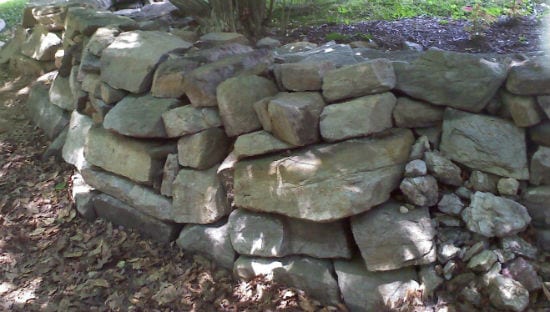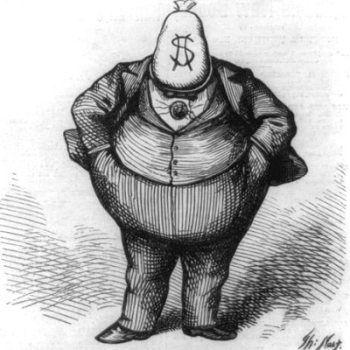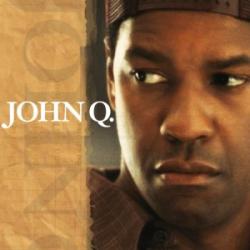When I was in my 20s I had a mentor who tried, and failed, to convince me to become a conservative. It was, he said, not so much an ideology as a habit of mind — an emphasis on prudence, caution, and skepticism. “The burden of proof lies with the innovators,” he said.
I respect the wisdom of that as a general rule, but I found it frustrating in practice as the standard for what constituted “proof” seemed to be ever-shifting and ever-receding. And what did and didn’t count as innovation also seemed a bit slippery.
My mentor liked to cite “Chesterton’s Fence” as an illustration of the guiding principle of conservatism: Before taking a fence down you should first understand the reasons why it was put up.
Fair enough. Again, there’s wisdom in that. A deferential consideration of tradition involves remembering that you’re not smarter and more knowledgeable than everybody else who’s ever lived, and remembering that is a Good Thing. But Chesterton’s Fence is also a troubling little parable that says more than it intends, and less than it purports, about conservative habits of mind.

My initial reaction to this “simple principle” was less than positive mainly because it involves a fence. Fences can be good things — they’re great for baseball and for dogs and for safety reasons. But the usual function of fences is either keeping people out or keeping them in, and that doesn’t seem like an always benign, or neutral, or wholly random function for illustrating Chesterton’s point. Thinking of Chesterton’s Fence thus wound up making me think of Woody Guthrie’s fence or, heck, of the Five Man Electrical Band’s fence.
Chesterton might have chosen some other pre-existing construct, like a bridge or a road or a well. But he didn’t. He chose a fence. And the more one thinks about it, the more one realizes he had to choose a fence because none of those other things would have worked to make his point. The “use of it” isn’t in question when looking at a bridge or a road or a well. And, in any case, the “reformers” Chesterton was railing against weren’t usually in the business of clearing away bridges or roads or wells. They were, rather, in the business of clearing away fences just as he was in the business of defending and maintaining them.
The full description of what has since come to be called “Chesterton’s Fence” comes from G.K. Chesterton’s 1929 book The Thing, which is one of those Chesterton books read mainly by the sort of Chesterton fan who loves his essays more than his fiction (which is to say who loves the bits of Chesterton that haven’t aged well more than the bits that have). Here is what Chesterton wrote:
In the matter of reforming things, as distinct from deforming them, there is one plain and simple principle; a principle which will probably be called a paradox. There exists in such a case a certain institution or law; let us say, for the sake of simplicity, a fence or gate erected across a road. The more modern type of reformer goes gaily up to it and says, “I don’t see the use of this; let us clear it away.” To which the more intelligent type of reformer will do well to answer: “If you don’t see the use of it, I certainly won’t let you clear it away. Go away and think. Then, when you can come back and tell me that you do see the use of it, I may allow you to destroy it.
Again, the frustrating thing about this in practice is that no matter how thoroughly we are able to come back and tell our conservative friends that we do fully understand and appreciate the original reasons for the construction of the fence, they remain unwilling to “allow” us to remove it. (The word “allow” there is worth pondering. The presumption there about who is, by definition, always a supplicant, and who holds the authority to permit or to prohibit is telling. “Allow” is, in this instance, very much a fence-builder’s word.)
But also note that Chesterton’s analogy falls apart because, well, it’s a fence and that’s what fences do. They fall apart. Fences have to be maintained, mended, and constantly rebuilt. Fences just don’t work as a metaphor for traditions, laws, and institutions handed down immutable, inviolate, and inviolable from ancient times. There’s no such thing as a multi-generational fence. You don’t build a fence so much as you adopt a perpetual budget for perpetual fence-building. Would-be “reformers” don’t need to propose “destroying” an existing fence, they only ever need to propose that the fence-builders stop rebuilding it.
I suppose a wall might have better served to illustrate Chesterton’s point, but that had already been ruled out as an analogy. Robert Frost had seen to that 15 years earlier when he published “Mending Wall.” You had to read that in school at some point, but follow the link and read it again if it’s been a while. Because the most important thing to remember about Chesterton’s Fence is that Robert Frost covered this exact topic first, and far more thoroughly, with greater depth and insight.
Unlike Chesterton, Frost acknowledges right from the start that tradition is not a static inheritance but a contemporary construct — a thing that exists because we are, right now, doing the work of building and rebuilding it. The role of Chesterton in the poem is played by Frost’s neighbor. Like Chesterton, the neighbor is eminently quotable and frequently (mis)quoted. But Frost is not impressed with the quotation:
… I see him there
Bringing a stone grasped firmly by the top
In each hand, like an old-stone savage armed.
He moves in darkness as it seems to me,
Not of woods only and the shade of trees.
He will not go behind his father’s saying,
And he likes having thought of it so well
He says again, “Good fences make good neighbors.”
Frost is not imprudent. He acknowledges that good fences might make good neighbors where there are cows. But where there are no cows he sees them only as they are — as a somewhat absurd and ridiculous, tediously burdensome game insisted on by those who are unable or unwilling to go behind or beyond their fathers’ sayings.
The ending of the poem, cited above, follows the crux of the difference between Frost and Chesterton, a difference that illuminates why the latter’s “principle” cannot be useful as a definition of what it means to be “conservative”:
Before I built a wall I’d ask to know
What I was walling in or walling out.
If a wall or a fence exists today it is not there because it was handed down to us from our forefathers and our sacred tradition. It exists because we are constantly going out and wearing our fingers rough to rebuild it and rebuild it again. Every wall and fence is thus itself perpetually an innovation, and the burden of proof lies with the innovators.
It’s misleading and muddying to think of conservatives as merely the cautious defenders of ancient fences. (“Ancient fence” is an oxymoron.) Conservatives are, rather, fence-builders and fence-maintainers. They are also often the builders of brand new fences and just as often the recklessly enthusiastic destroyers of others.
It doesn’t help us to understand conservatism, then, as merely being either pro- or anti-fence. To understand what it’s about, we need to understand what (or who) it is interested in fencing in and what (or who) it is trying to fence out.
And the most apt and accurate description I’ve encountered of that comes not from a great poet or a witty British curmudgeon, but from a comment on a blog post. We’ll get to that in a follow-up post. Stay tuned.












